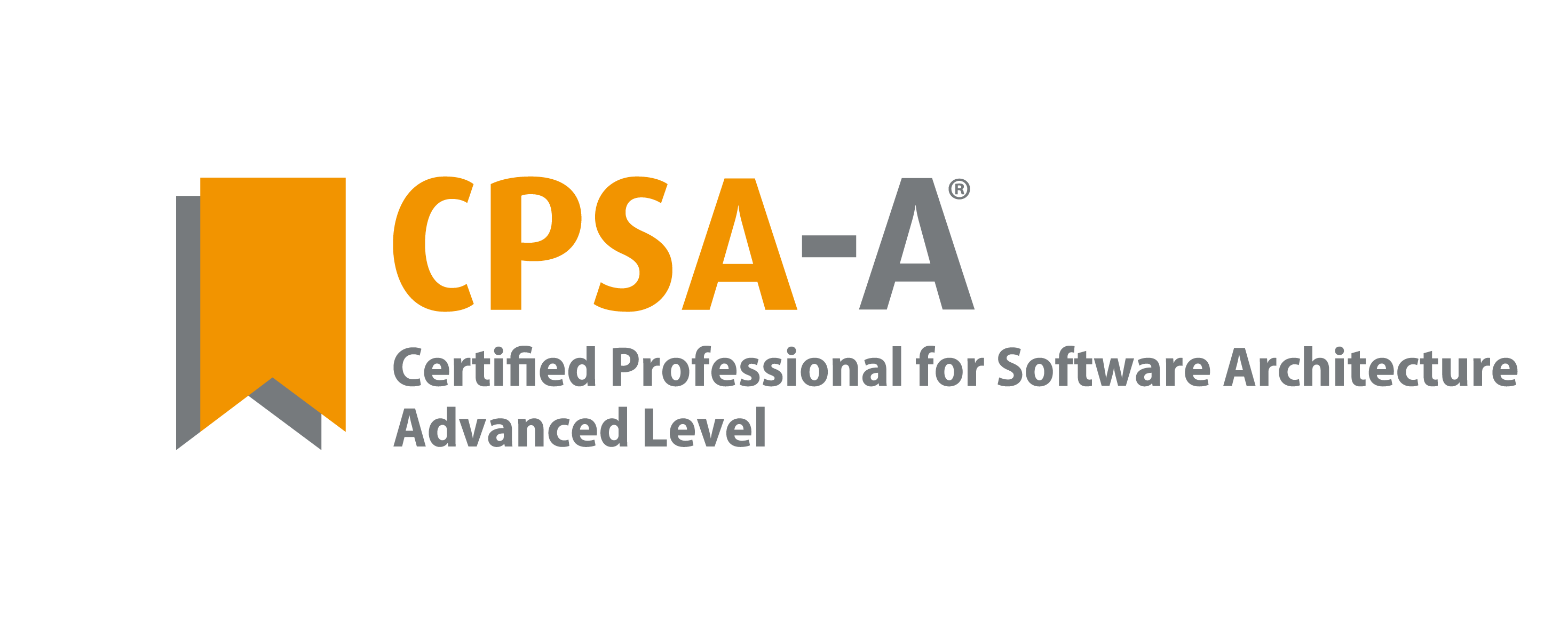
Beschreibung
Die Teilnahme am iSAQB® CPSA-A Enterprise Architecture Management (EAM) Kurs gibt den Teilnehmern 30 Methodologische Kompetenz (MC) Punkte auf die 70 Punkte, die für die Teilnahme an der iSAQB CPSA-A Prüfung mit Brightest erforderlich sind. Es ist wichtig zu beachten, dass im Rahmen der 70 Punkte, die für die Teilnahme an der iSAQB CPSA-A Prüfung mit Brightest erforderlich sind, mindestens zehn Kompetenzpunkte in den folgenden Bereichen erforderlich sind:
- Technische Kompetenz (TC)
- Methodologische Kompetenz (MC)
- Kommunikative Kompetenz (CC)
Der akkreditierte iSAQB® EAM - Enterprise Architecture Management (CPSA-A) Kurs basiert auf dem aktuellen iSAQB® Curriculum:
Teil 1 - Grundbegriffe des EAM (Enterprise Architecture Management)
- Identifikation und Erklärung der Aufgaben, Ziele und Vorteile des EAM Interaktion von (IT-)Strategie und EAM
- Erklärung des Unterschieds zwischen EAM und E(IT)AM
- Erklärung und Anleitung zur Bewertung eines Anwendungsportfolios
- Benennung und Beschreibung der Aufgaben und Herausforderungen der Governance
- Benennung und Beschreibung der Anforderungen an EAM-Tools
Teil 2 - Verfahren im EAM
- Präsentation und Erklärung des Prozesses zur Formulierung einer Architekturvision
- Präsentation und Erklärung der Analyse der bestehenden Architektur
- Präsentation und Erklärung der Entwicklung der Zielarchitektur
- Erklärung der Unternehmensgrundsätze in der Unternehmensarchitektur und deren Umsetzung
- Präsentation und Erklärung der Bedeutung der Unternehmensarchitektur als regulatorischen Rahmen für IT-Strategien
- Management und Bewertung von Implementierungsprojekten
Teil 3 - Repositories und Metamodelle
- Architektur-Metamodell
- Begrenzung unterschiedlicher Informationstypen
- Präsentation und Erklärung der Nutzung und Verwaltung eines EAM-Repositories
- Identifikation und Erklärung der Definition und Nutzung von Referenzarchitekturen
Teil 4 - Governance und Change Management
- Identifikation und Beschreibung der Rollen der IT-Governance
- Präsentation und Erklärung der Funktion, Aufgaben und Zusammensetzung der Vorstandsgremien
- Identifikation und Beschreibung von organisatorischen Modellen für IT-Governance
- Identifikation des Unterschieds zwischen Best Practices, architektonischen Richtlinien und Prinzipien
- Benennung und Beschreibung der Aufgaben eines Governance-Reviews mit COBIT
- Präsentation und Erklärung von COBIT
- Die Zwecke und Vorteile von COBIT
- Präsentation und Erklärung der grundlegenden Governance-Prinzipien von COBIT
Teil 5 - Einführung von EAM
- Präsentation und Erklärung der wichtigsten Einstiegspunkte für ein EAM
- Förderung und Optimierung von EAM in der Organisation
- Kommunikation des Zwecks und der Vorteile einer EAM-Implementierung an Stakeholder
- Migrationspfade für die Einführung eines EAM in eine bestehende IT-Landschaft
- Darstellung von Grenzen
- Darstellung von Grenzen bei der Einführung eines EAM in eine bestehende IT-Umgebung
Teil 6 - Enterprise Architecture Frameworks
- Identifikation und Erklärung der Anforderungen und Vorteile des Enterprise Architecture Framework
- Benennung und Erklärung des Unterschieds zwischen den verschiedenen Arten von architektonischen Gerüsten
- TOGAF
Zielpublikum
Das CPSA-A Enterprise Architecture Management Seminar ist besonders wertvoll für Fachleute, die ein besseres Verständnis dafür entwickeln möchten, wie man Konsistenz über komplexe IT-Systeme und Anwendungslandschaften hinweg verwaltet.
Voraussetzungen
Um an einem iSAQB® CPSA - Advanced Level Kurs teilzunehmen, müssen Sie das iSAQB® Certified Professional for Software Architecture - Foundation Level (CSPA-F) Zertifikat besitzen.
Voraussetzungen an das Wissen:
Teilnehmer sollten über die folgenden Vorkenntnisse verfügen:
- Grundlagen der Architekturentwicklung: Bedeutung und Abgrenzung der Architektur, Verfahren, Einflüsse und Anforderungen, Architekturentscheidungen, Modelle und Dokumentation mit Sichten, wie sie im CPSA-F Foundation Level gelehrt werden.
Kenntnisse in den folgenden Bereichen können helfen, einige der im Kurs behandelten Konzepte zu verstehen:
- Praktische Erfahrung im Architektur-Bereich und Einblick in mindestens eine moderne Technologie oder Plattform für die Entwicklung verteilter Anwendungen
- Kenntnisse der typischen Herausforderungen im Bereich der Unternehmensarchitekturen:
- Definition von (IT) Unternehmenszielen
- Strategische (IT) Planung
- (IT) Portfolio-Management
- Application Lifecycle Management
Lehrpläne und Musterprüfungen werden in Kürze veröffentlicht!
Lehrpläne und Musterprüfungen werden in Kürze veröffentlicht!